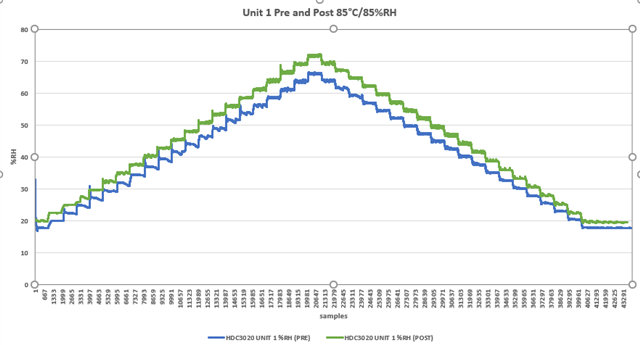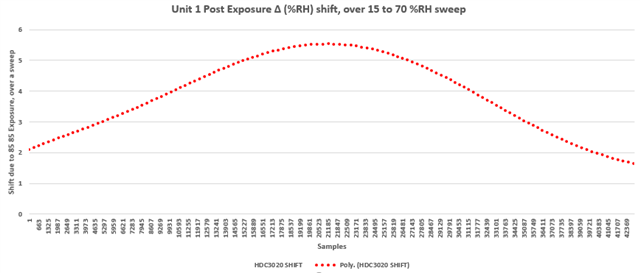Dear TIs:
there is an application notes for TI humidity sensor HDC3020 named 85°C/85% accelerated life test impact on polymer-based relative humidity sensors (SLYY210) , would you please explain more detail for this stress test ?
1) place the samples in chamber 85°C/85% for 1000 hours ,
2) test performance in the same chamber and check some tempreture and humidity point data directly ? no need take out those sampels from chamber to a dry enveirement ? do wen need run drift compensation or heater the sensor first before check performance ?
so is it possible to know how to do this test step by step? I need run this kind of benchmark test using my HDC3020 EVM.
thanks.



